6.1.3.7 Lab – Monitor and Manage System Resources in Windows 7 and Vista (Answers)
Introduction
In this lab, you will use administrative tools to monitor and manage system resources.
Recommended Equipment
- The following equipment is required for this exercise:
- A computer running Windows 7 or Vista with Internet access
Step 1: Stopping and starting a service.
You will explore what happens when a service is stopped then started.
a. Log on to Windows as an administrator.
Note: Some antivirus or antispyware programs must be uninstalled on the computer for Windows Defender to work.
b. To see if Windows Defender is turned off click Start. In the Search programs and files field, type Defender and select Windows Defender.
If the This program is turned off message is displayed, click the click here to turn it on link.
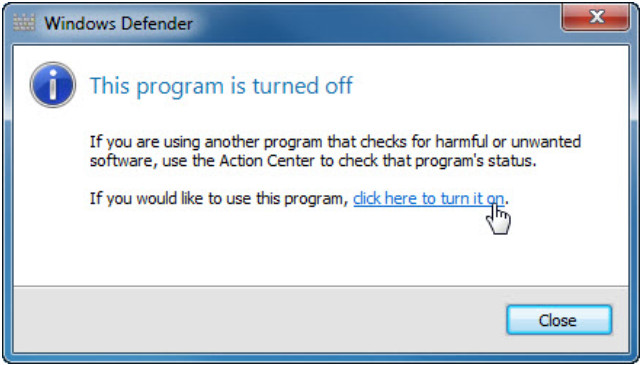
Note: Windows Defender should start, if not, uninstall any antivirus or antispyware programs and re-open Windows Defender.
c. Click Control Panel > Administrative Tools > Computer Management.
d. The Computer Management window opens. Click the arrow to the left of Services and Applications, and select Services.
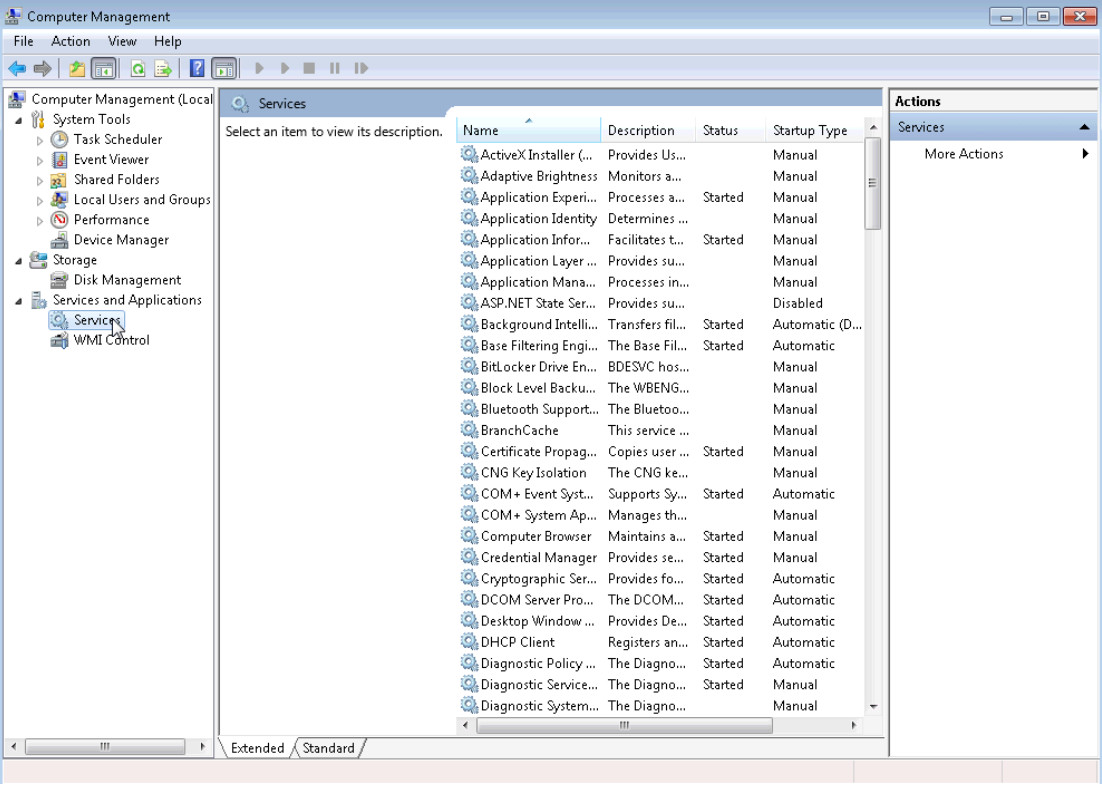
e. Resize and position the Windows Defender and Computer Management windows so they can be seen at the same time.
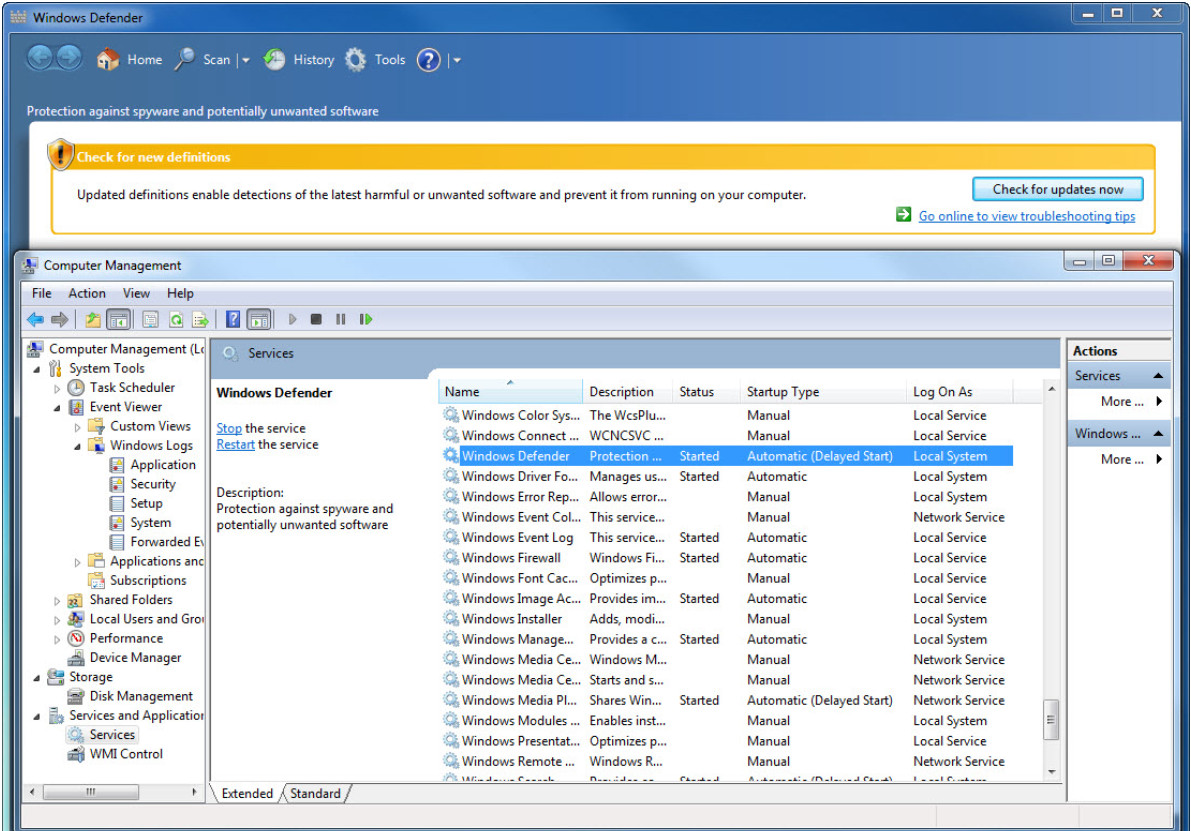
Can Windows Defender check for updates?
Yes.
f. Scroll the Computer Management window so you see the Windows Defender service.
What is the status of the service?
Started.
g. Right-click the Windows Defender service, and select Stop.
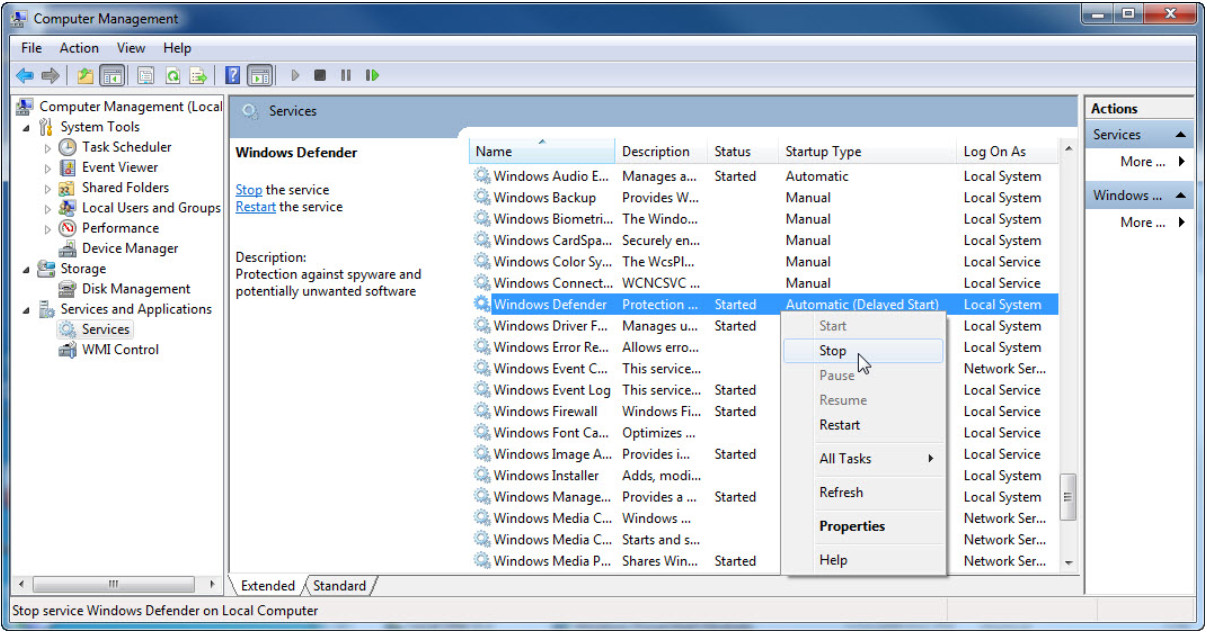
Note: The reason this service will be stopped is so that you can easily see the results. When stopping a service, to free up system resources the service uses, it is important to understand how the overall system operation will be affected.
h. The Service Control window opens and closes. Select the Windows Defender window to make it active.
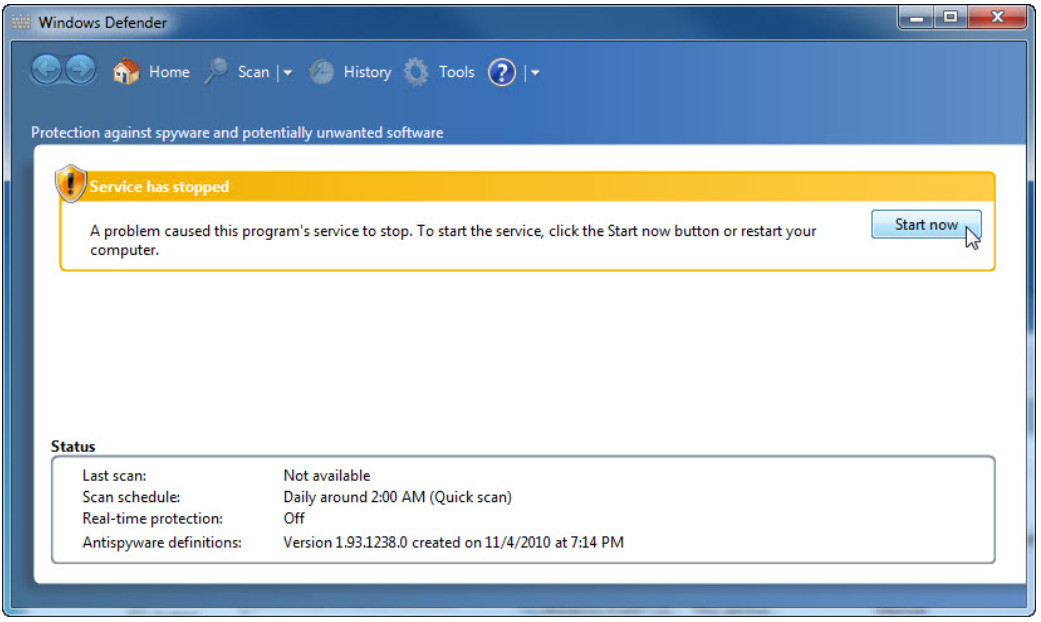
What is the status of the Windows Defender service?
The service has been stopped.
i. Start the Windows Defender service by clicking Start now.
Note: Windows Vista requires that you start Windows Defender from the Computer Management window. Right-click the Windows Defender service, and click Start.
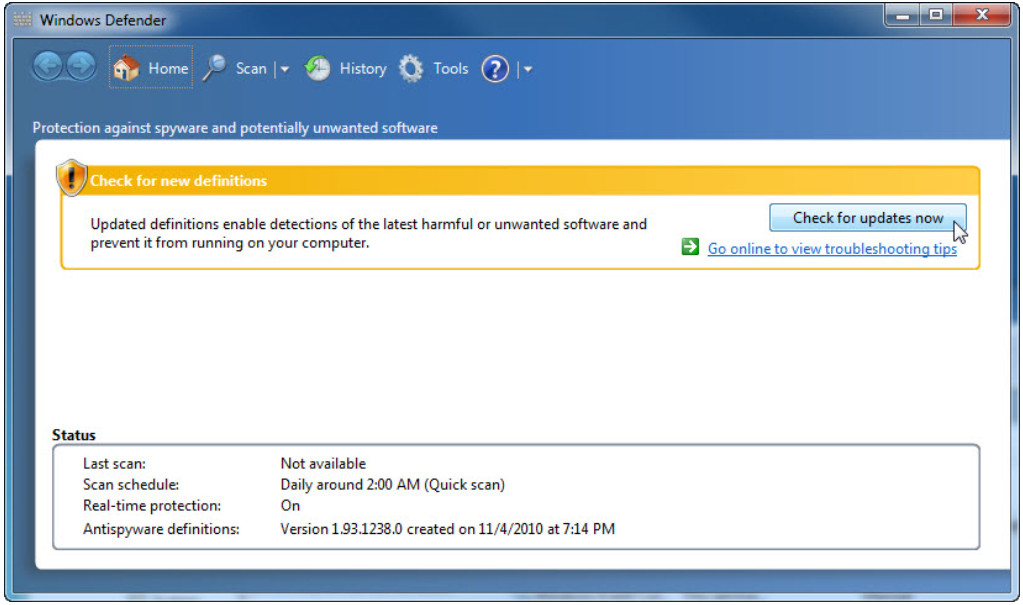
Can Windows Defender check for updates?
Yes.
j. Close the Windows Defender window but keep the Computer Management window open.
k. Expand Event Viewer > Windows Logs, then select System.

l. Select the second event in the list.
Look below the General tab. Explain what has happened to the Windows Defender service.
It has entered the stopped state.
m. Click the up arrow button on the keyboard or select the event above the one you just viewed.
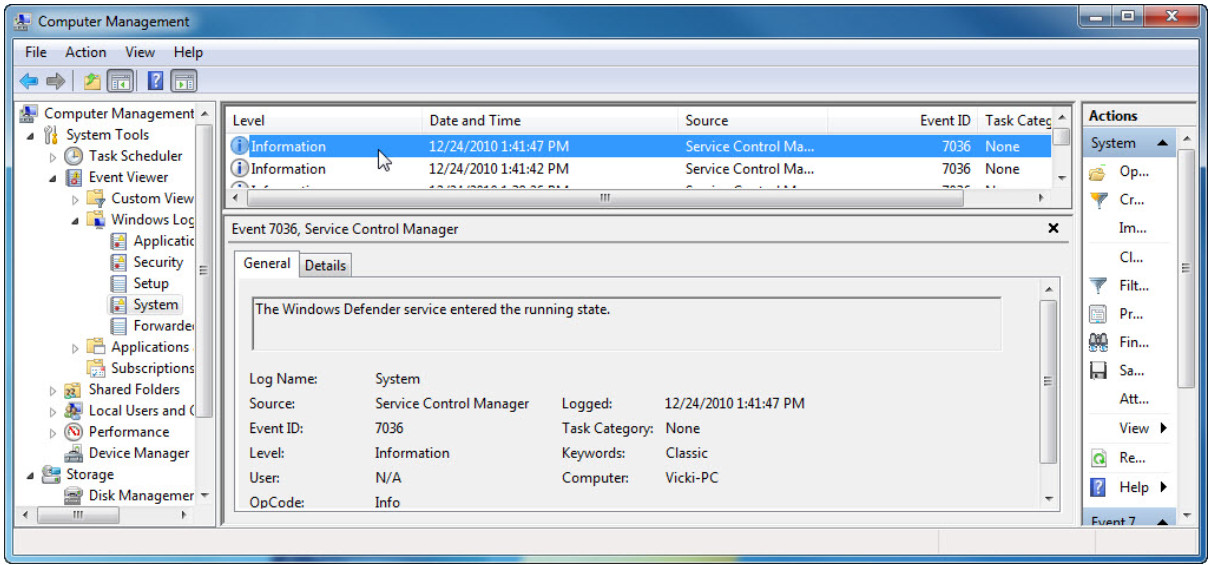
n. Close all open windows.
Step 2: Starting and stopping the Routing and Remote Access service.
You will explore what happens when a service is stopped then started.
a. Navigate to the Network and Sharing Center window by clicking Network > Network and Sharing Center.
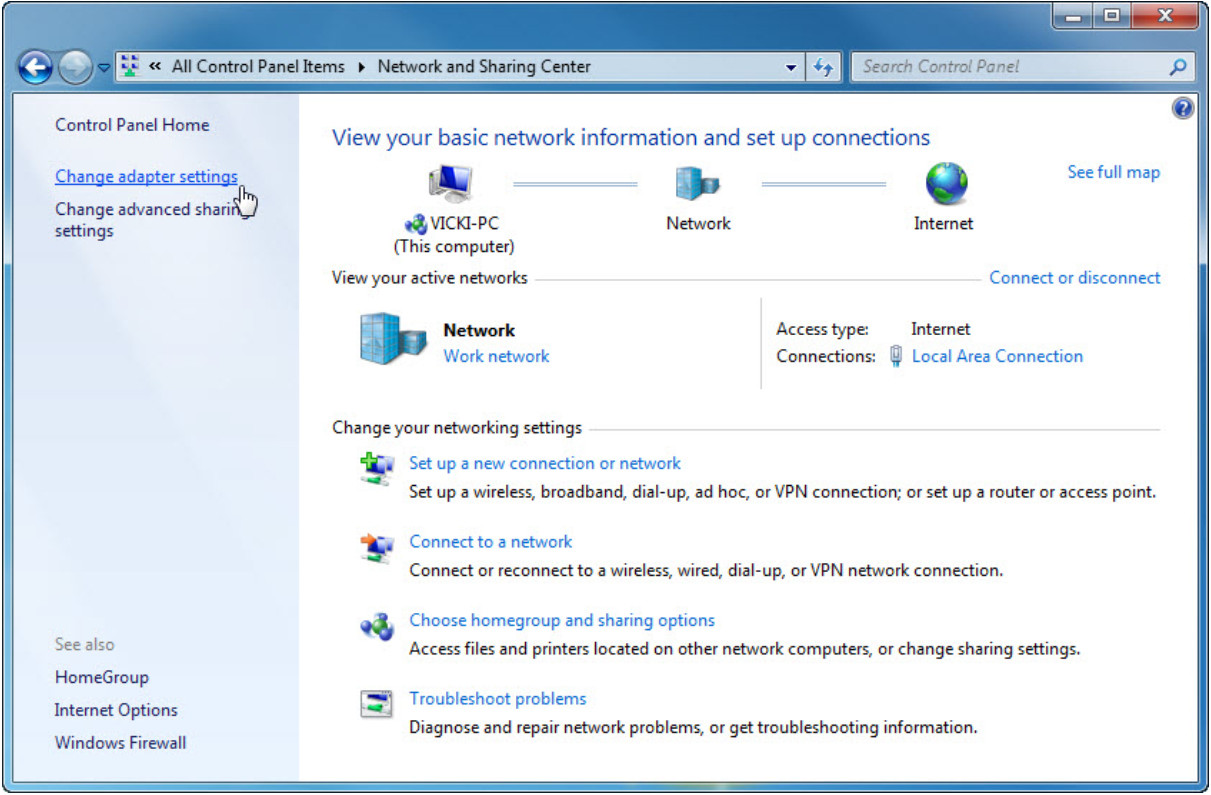
Note: If Network is not shown in the Start menu, complete the following: Right-click Start > Properties > Start Menu tab. Click Customize, and then scroll down the list to Network. Place a check mark next to Network, and then click OK > OK.
b. Click Change adapter settings in the left pane. Reduce the size of the Network Connections window and leave it open.
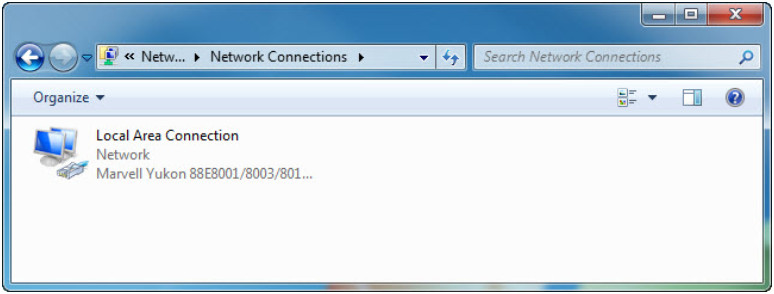
Note: For Windows Vista, click Manage network connections.
c. Open the Control Panel.
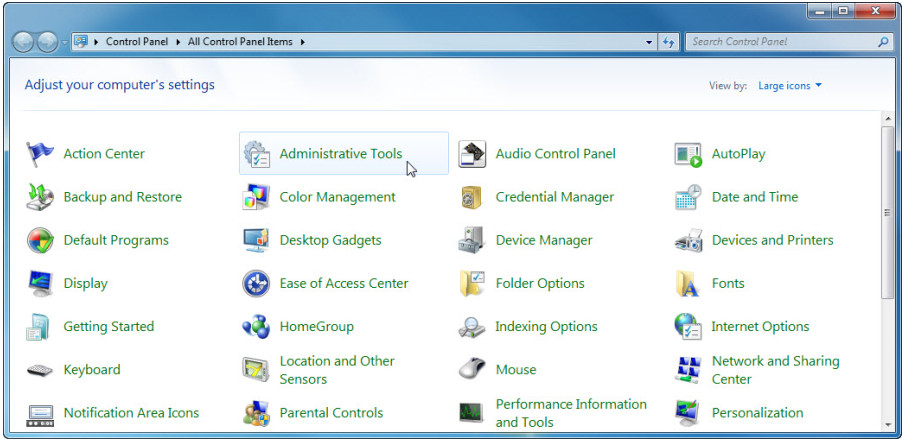
d. Click the Administrative Tools icon.
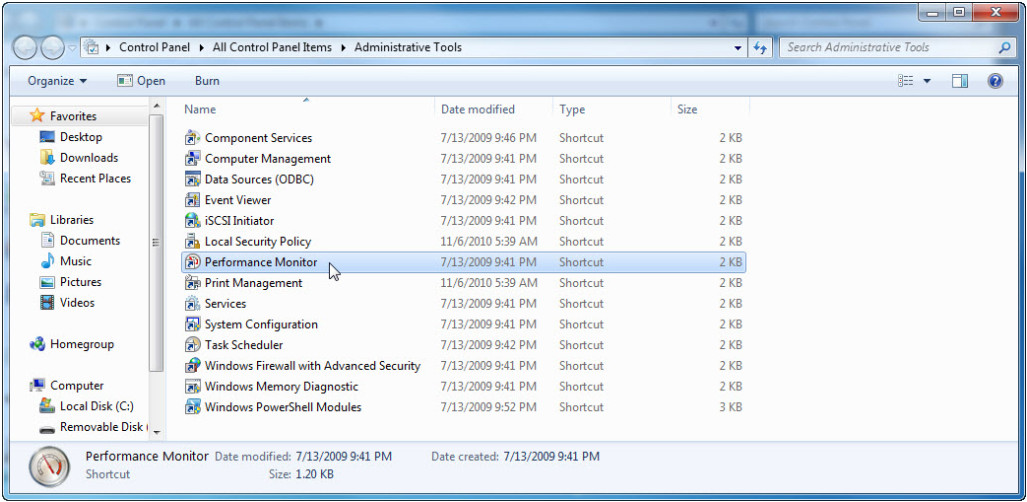
e. The Administrative Tools window opens. Double-click the Performance Monitor icon. The Performance Monitor window opens. Make sure Performance Monitor in the left pane is highlighted.
Click the Freeze Display icon to stop the recording.
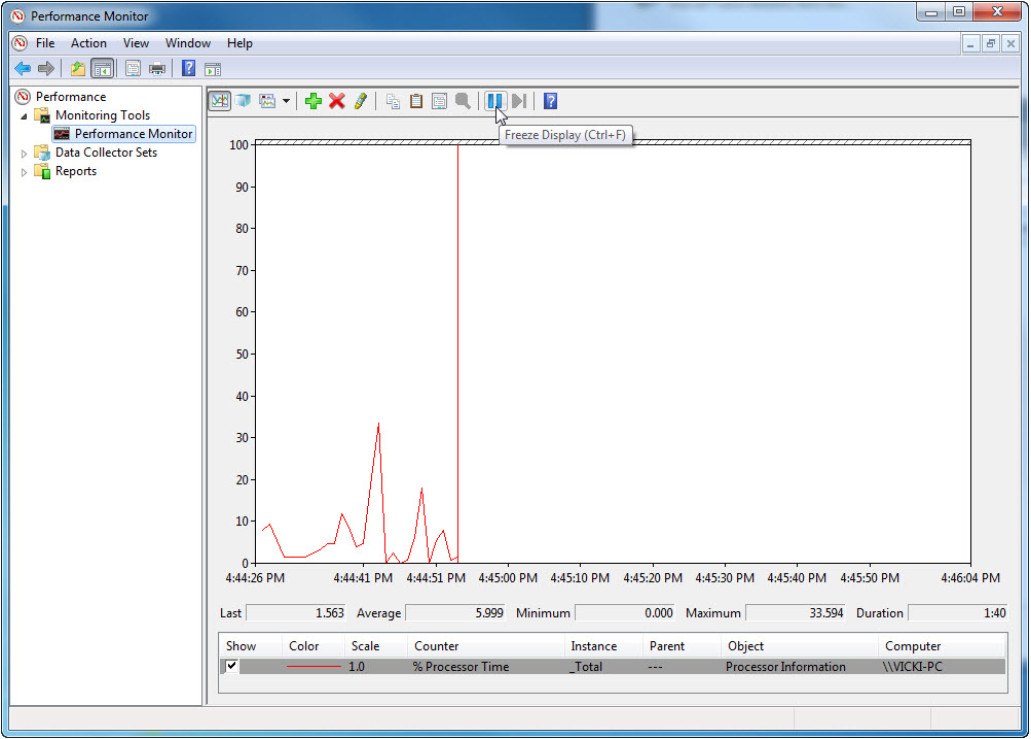
Note: In Windows Vista the tool is called Reliability and Performance Monitor.
f. Right-click the Performance Monitor menu bar and select Clear to clear the graph. Leave this window open.
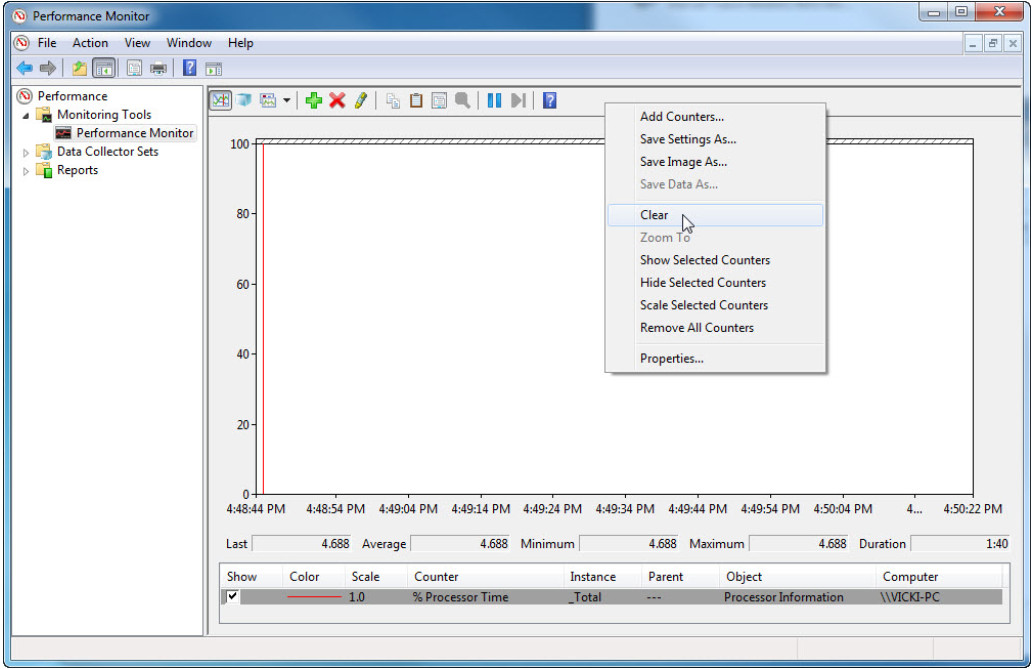
g. Navigate to the Administrative Tools window by clicking Control Panel > Administrative Tools.
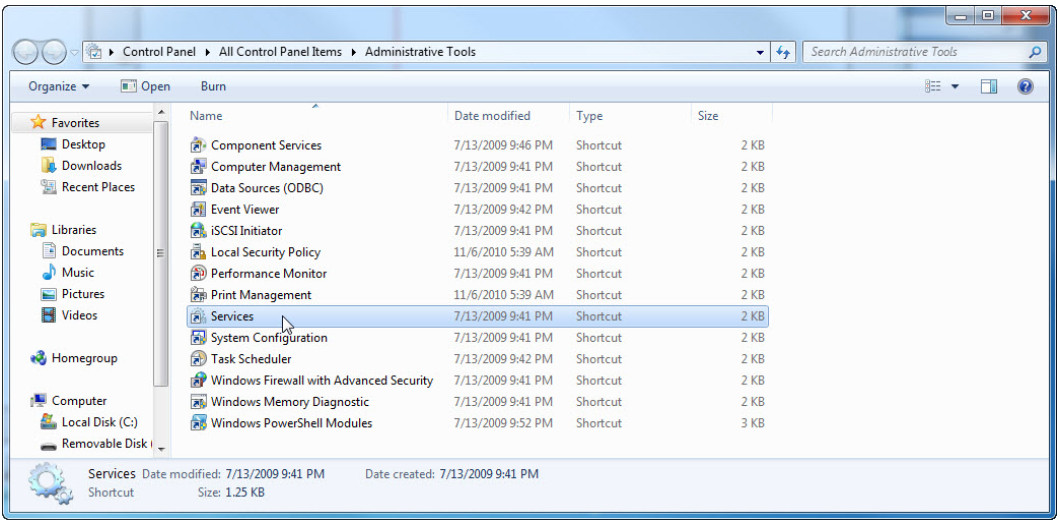
h. Double-click the Services icon.
i. Expand the width of the Services window so you have a clear view of the content. Scroll down in the right pane until you see the service Routing and Remote Access. Double-click Routing and Remote Access.
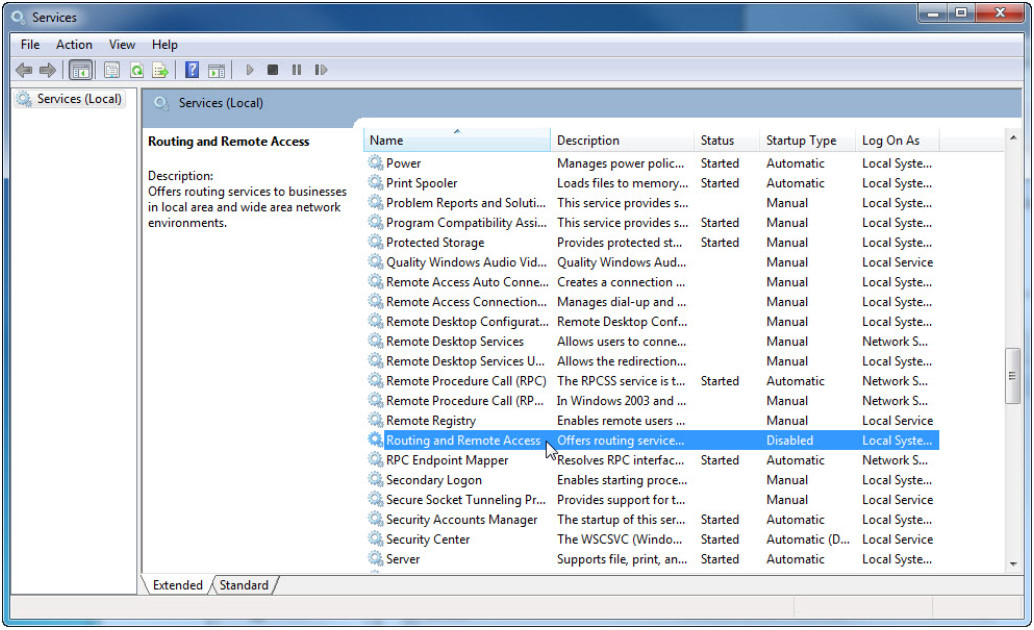
j. The Routing and Remote Access Properties (Local Computer) window opens. In the Startup type dropdown field, select Manual and then click Apply.
Note: The Start button is now active; do not click the button yet. Leave this window open.
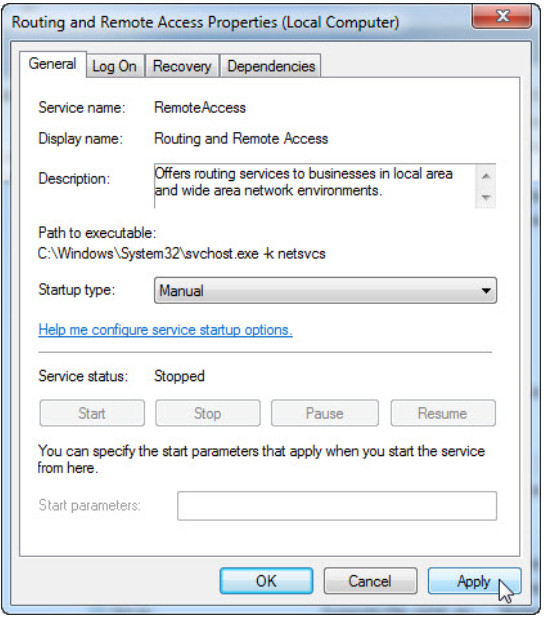
k. Position the Network Connections, Routing and Remote Access Properties (Local Computer), and Performance Monitor windows so you can clearly see them at the same time.
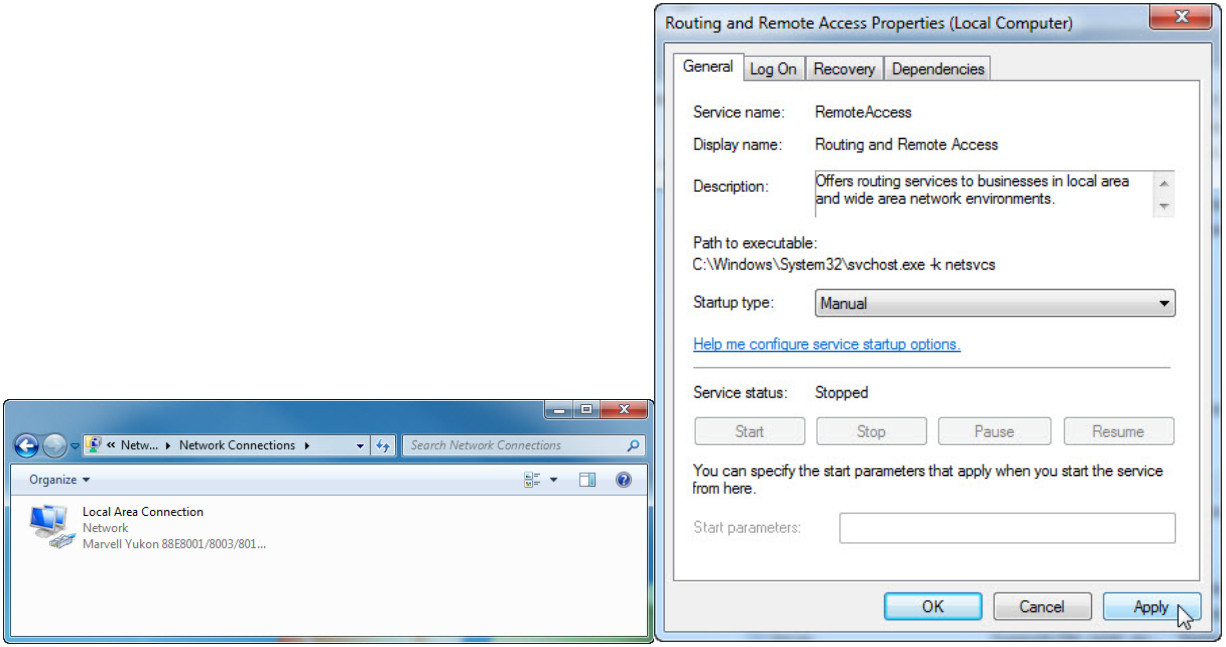
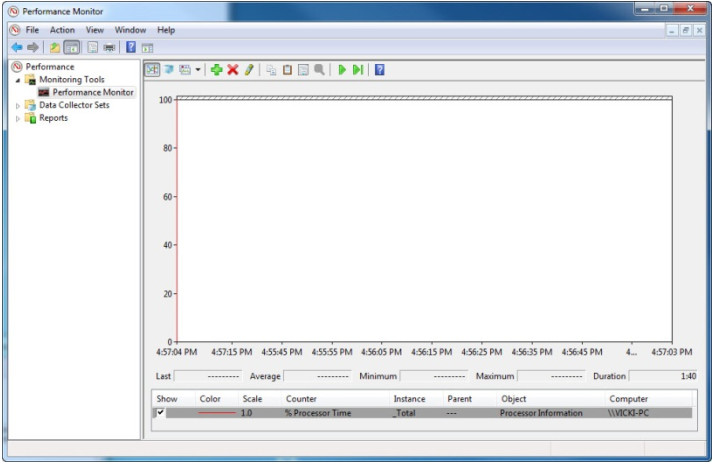
l. Click the Performance Monitor window to make it active. Click the Unfreeze Display icon to start the recording.
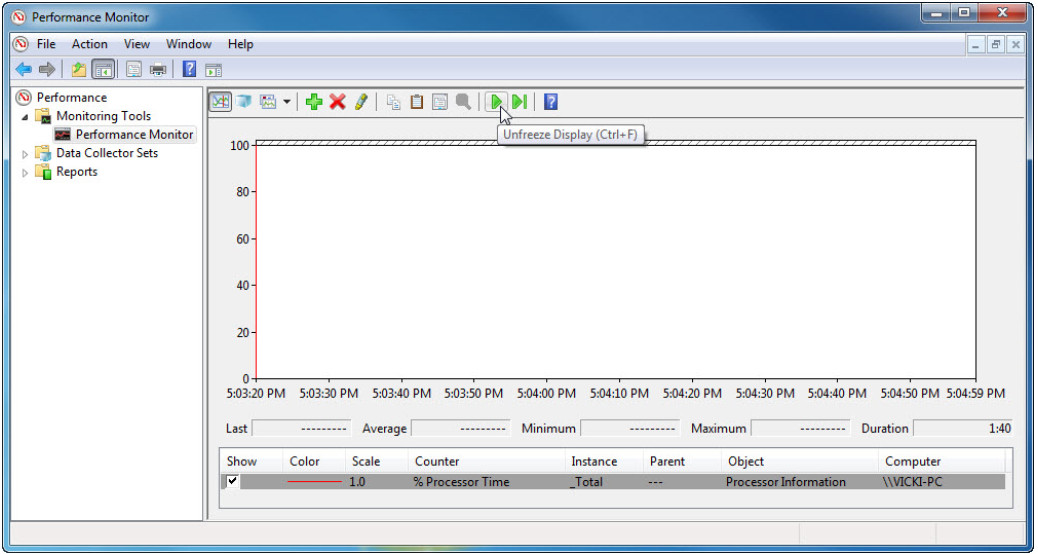
m. Click the Routing and Remote Access Properties (Local Computer) window to make it active. To start the service click Start. A window with a progress bar opens.
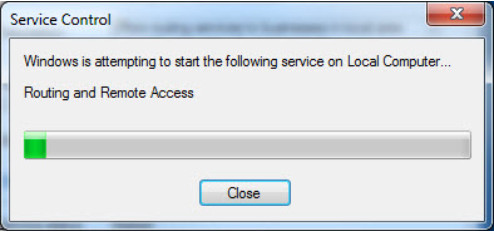
n. The Routing and Remote Access Properties (Local Computer) window now shows the Stop and Pause button active. Leave this window open
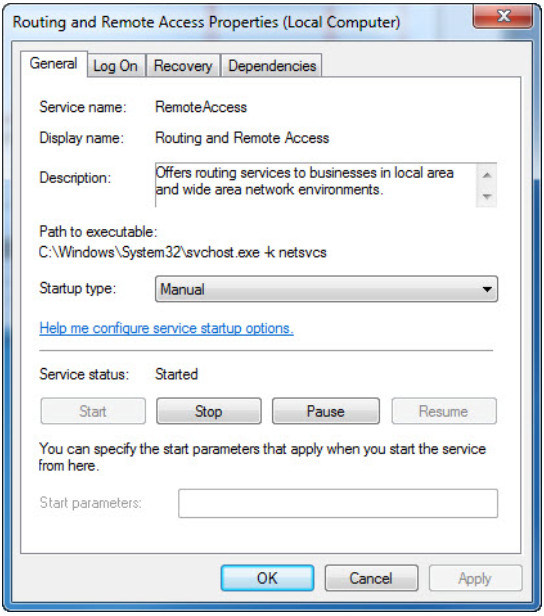
o. Click the Network Connections window to make it active.
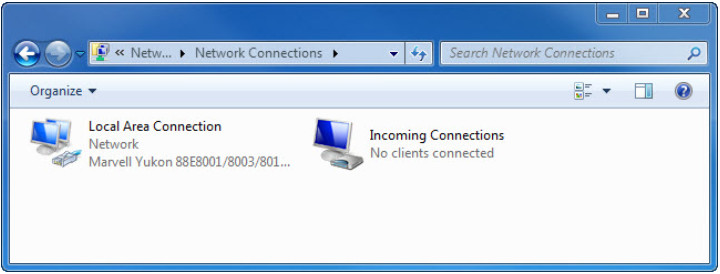
p. Press the function key F5 to refresh the content.
What changes appear in the right pane after starting the Routing and Remote Access service?
An Incoming Connections is displayed.
q. Click the Routing and Remote Access Properties (Local Computer) window to make it active and click Stop.
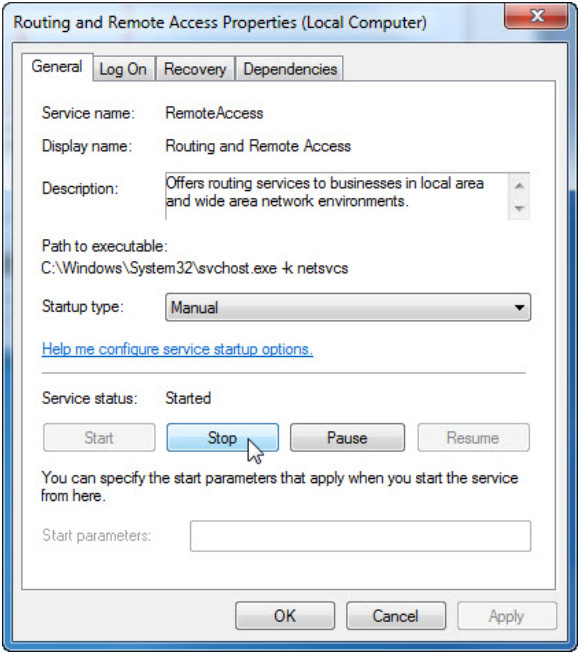
r. Click the Network Connections window to make it active.
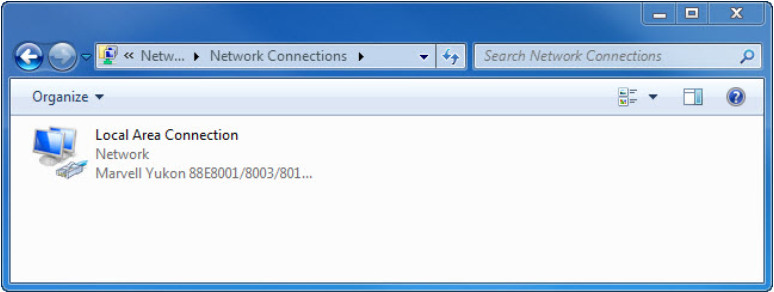
What changes appear in the right pane after stopping the Routing and Remote Access service?
The Incoming Connections is no longer displayed.
s. Click the Performance Monitor window to make it active and click the Freeze Display icon to stop the recording.
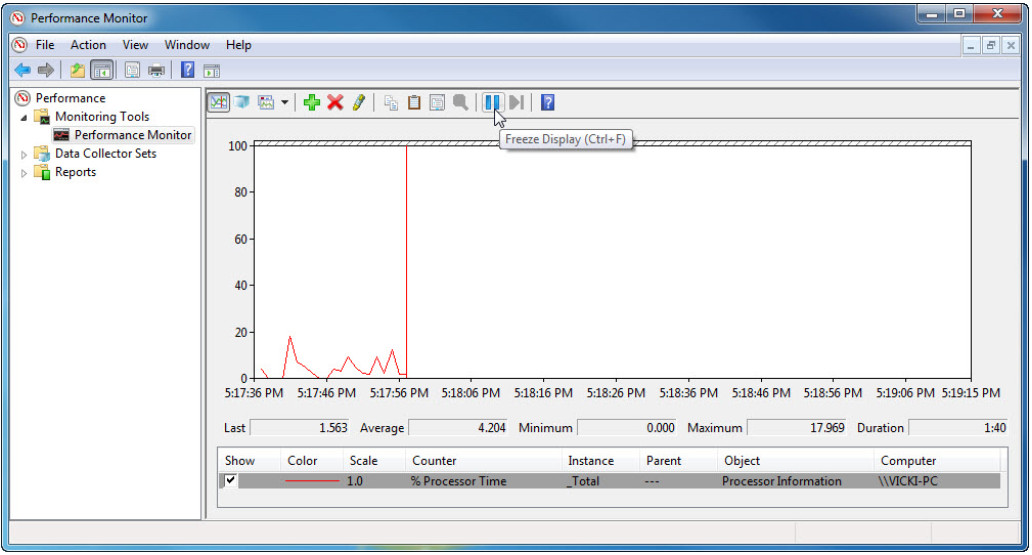
Which Counter is being recorded the most in the graph (hint: look at the graph color and Counter color)?
%Processor Time.
t. Click the Change graph type drop-down menu, select Report.
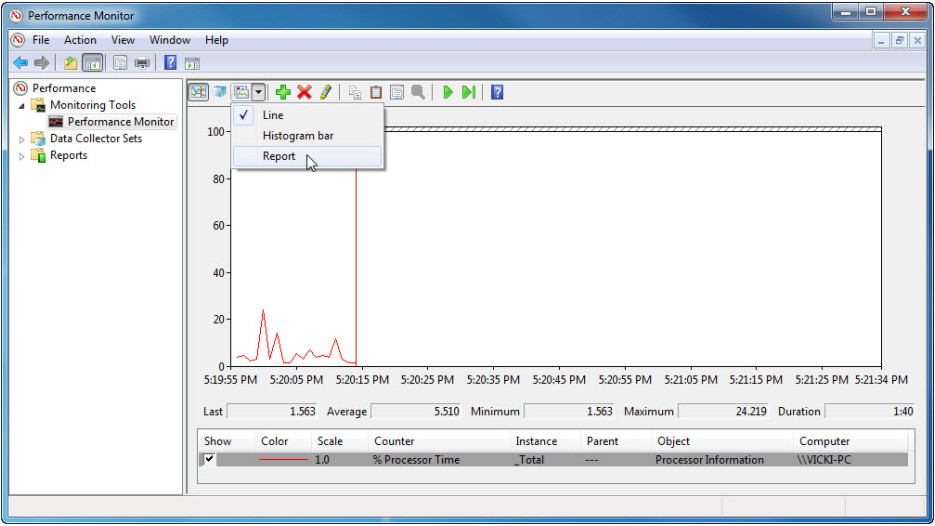
u. The display changes to report view.

What values are displayed by the counter?
Answers may vary. Processor Information % Processor Time: 1.563
v. Click the Routing and Remote Access Properties (Local Computer) window to make it active. In the Startup type field, select Disabled and click OK.
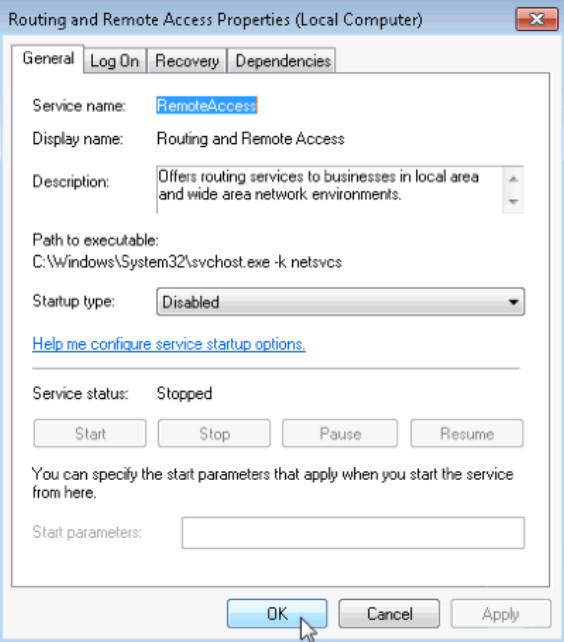
w. Click the Services window to make it active.
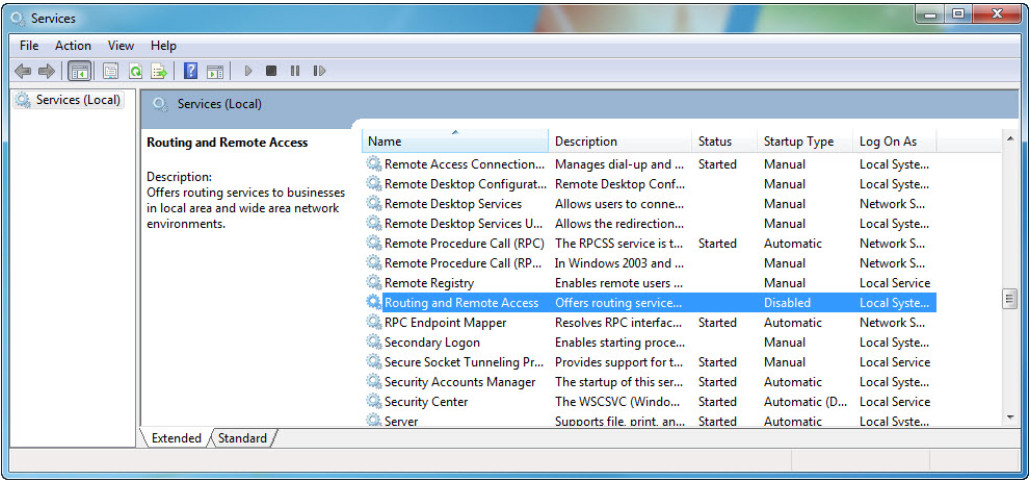
What is the Status and Startup Type for Routing and Remote Access?
Status is blank and Startup Type is Disabled.
x. Click the Performance Monitor window to make it active. Click the Unfreeze Display icon to start the recording.
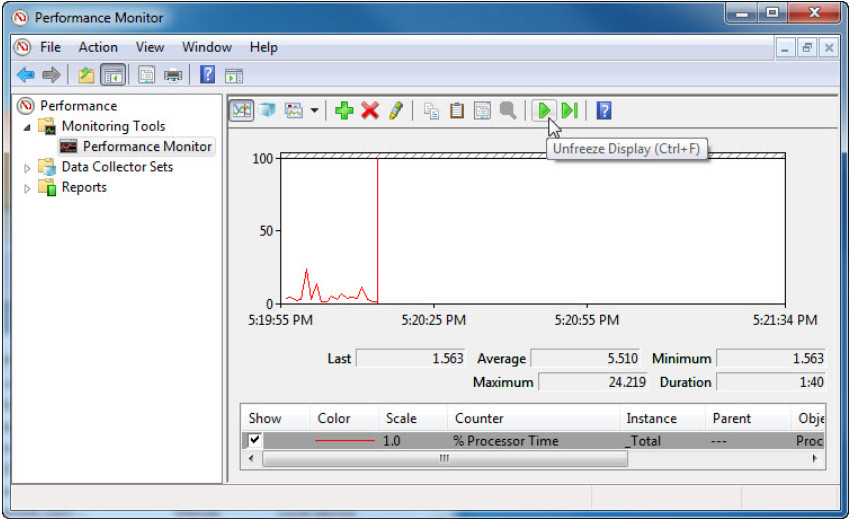
y. Close all open windows.
Step 3: Work in the Computer Manager utility.
a. Click Control Panel > Administrative Tools.
b. Double-click the Computer Management icon.
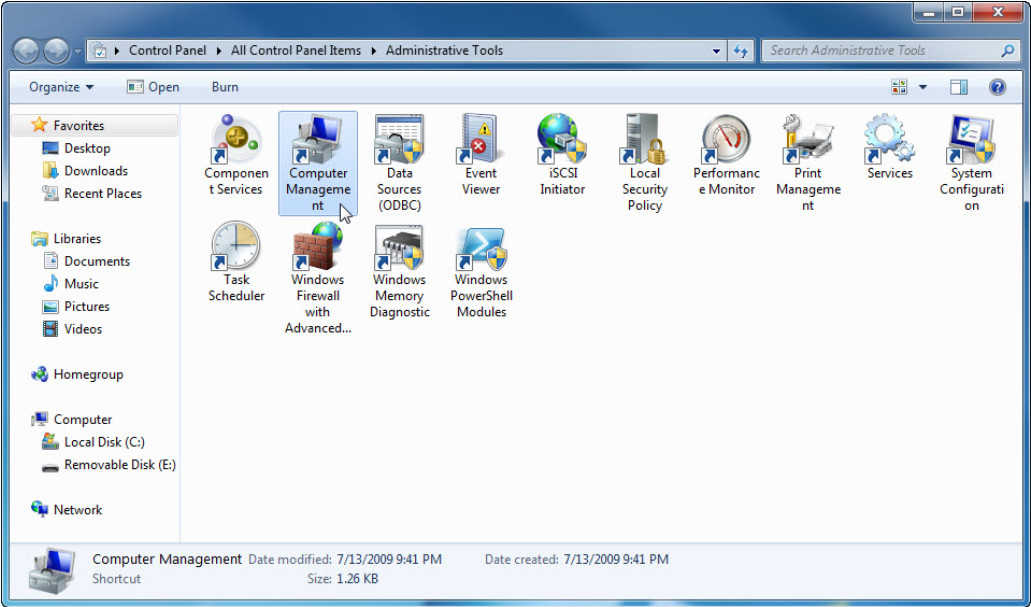
c. The Computer Management window opens. Expand the three categories by clicking on the arrow next to: System Tools, Storage, and Services and Applications.
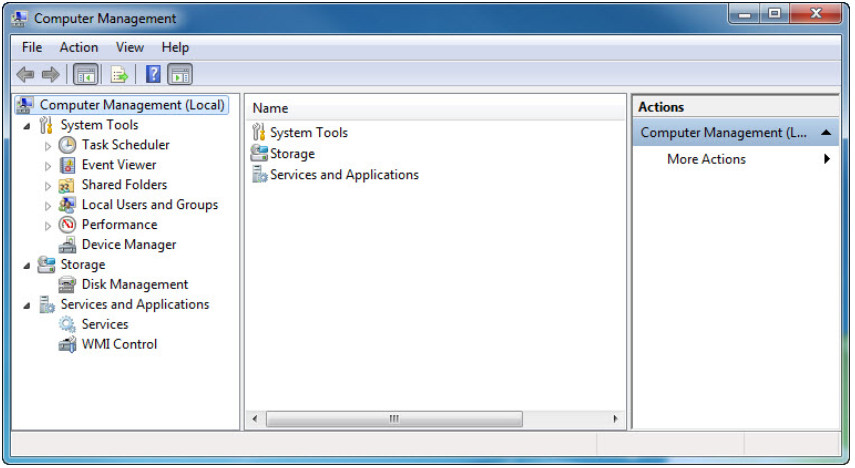
d. Click the arrow next to Event Viewer then click the arrow next to Windows Logs. Select System and double-click the first event in the window.
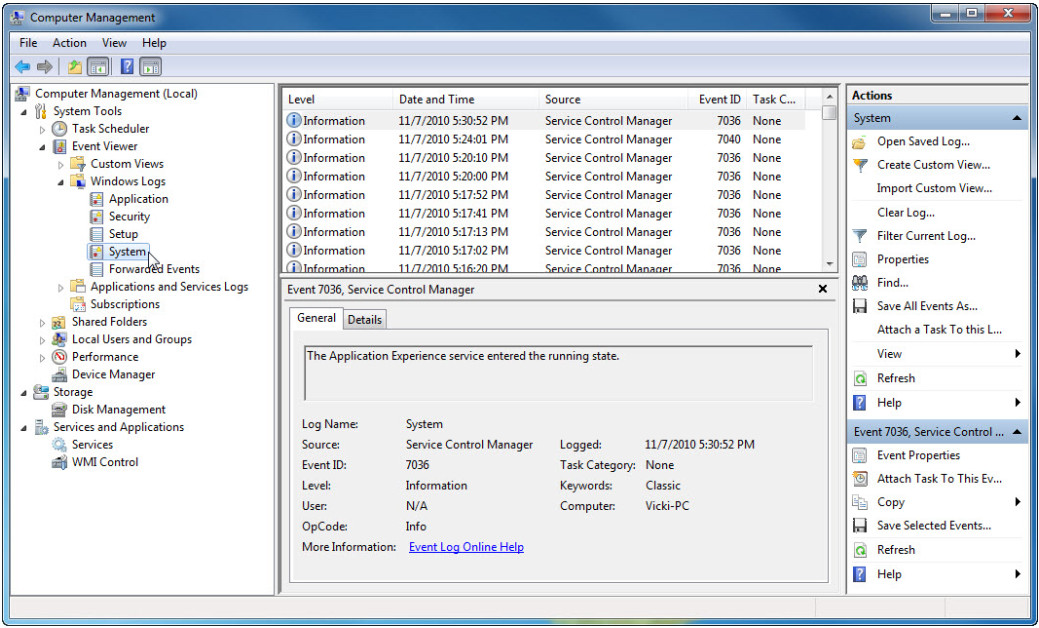
e. The Event Properties window opens for the first event. Click the down arrow key to locate an event for Routing and Remote Access. You should find four events that describe the order for starting and stopping the Routing and Remote Access service.
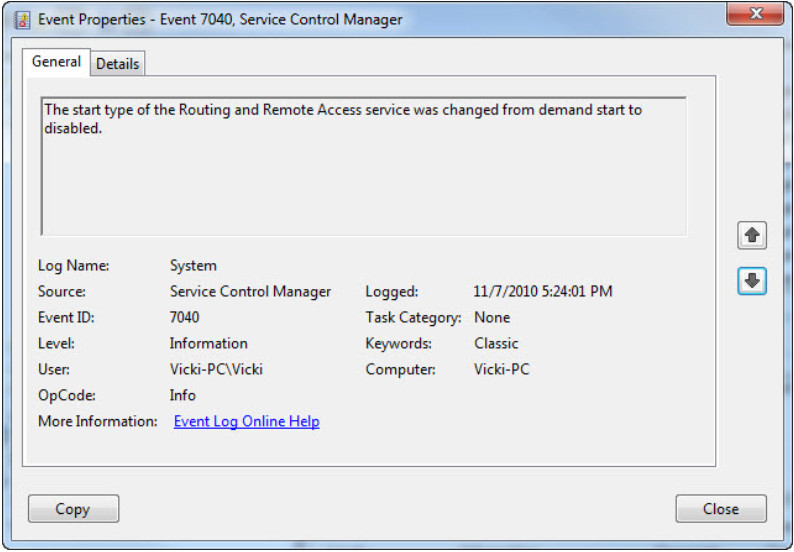
What are the descriptions for each of the four events?
The start type of the Routing and Remote Access service was changed from disabled to demand start.
The Routing and Remote Access service entered the running state.
The Routing and Remote Access service entered the stopped state.
The start type of the Routing and Remote Access service was changed from demand start to disabled.
f. Close all open windows.
Step 4: Configuring Administrative Tools
For the rest of this lab, you will configure advanced Administrative Tool features and monitor how this affects the computer.
a. Click Control Panel > Administrative Tools > Performance Monitor. The Performance Monitor window opens.
Note: In Windows Vista, the utility is called Reliability and Performance Monitor.
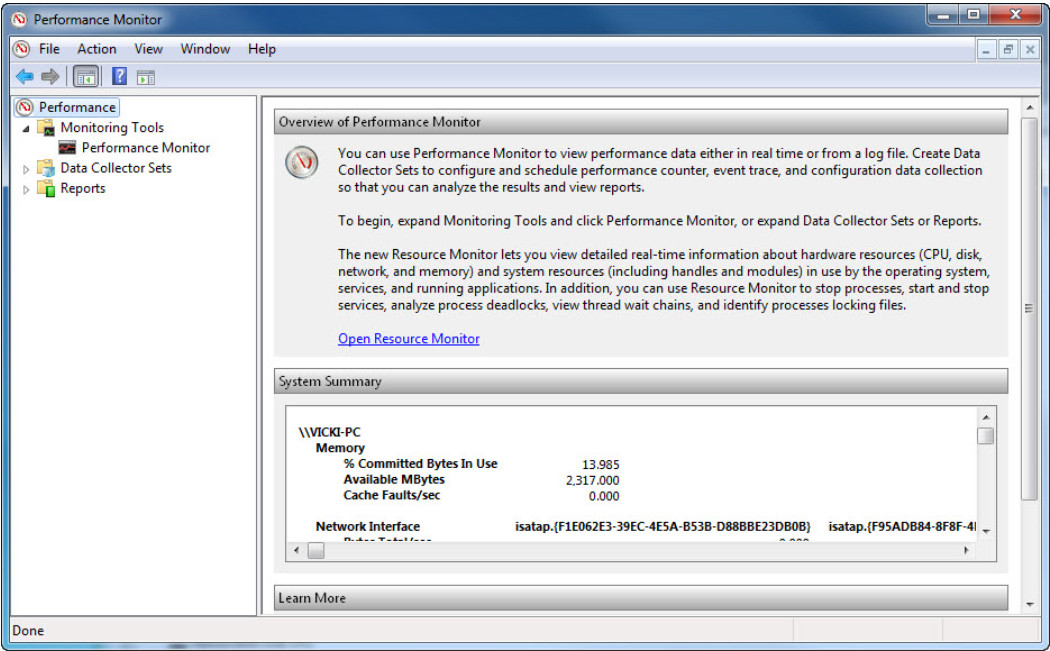
b. Expand Data Collector Sets. Right-click User Defined, and select New > Data Collector Set.

c. The Create new Data Collector Set window opens. In the Name field, type Memory Logs. Select the Create manually (Advanced) radio button, and click Next.
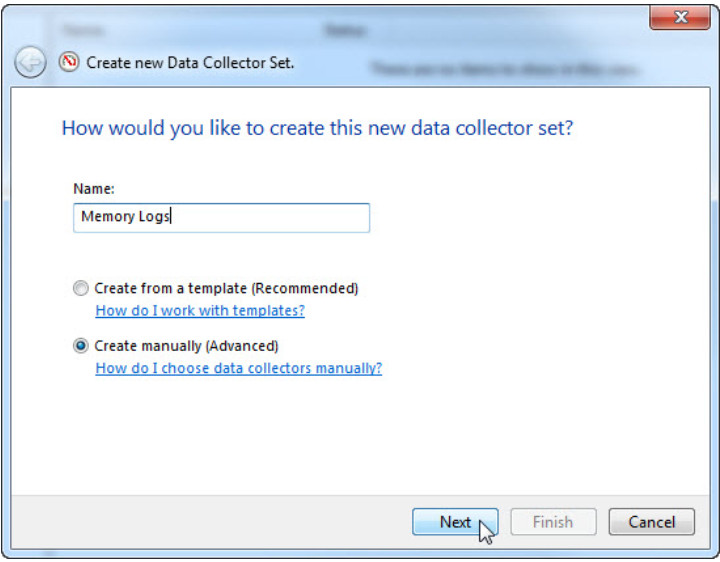
d. The What type of data do you want to include? screen opens. Check the Performance counter box then click Next.
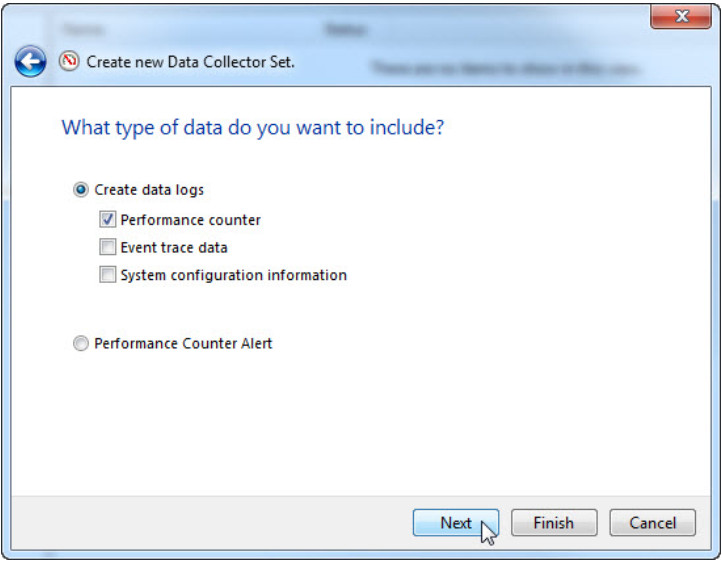
e. The Which performance counters would you like to log? screen opens. Click Add.
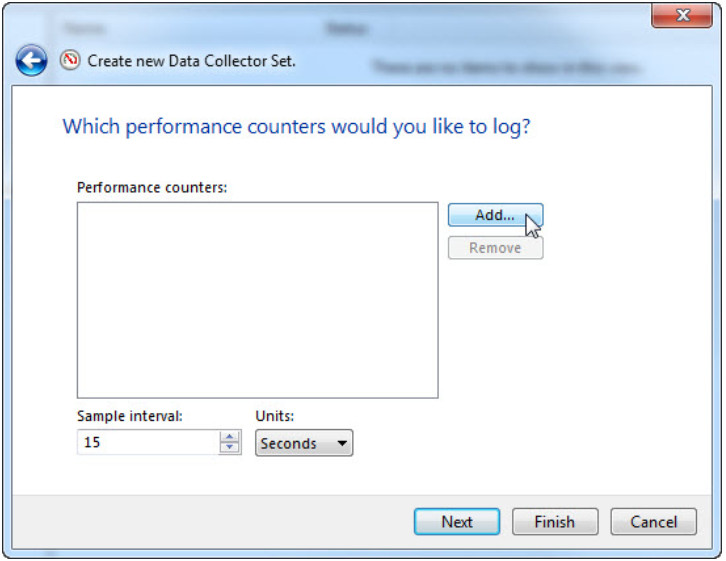
f. From the list of available counters, locate and expand Memory. Select Available MBytes and click Add>>.
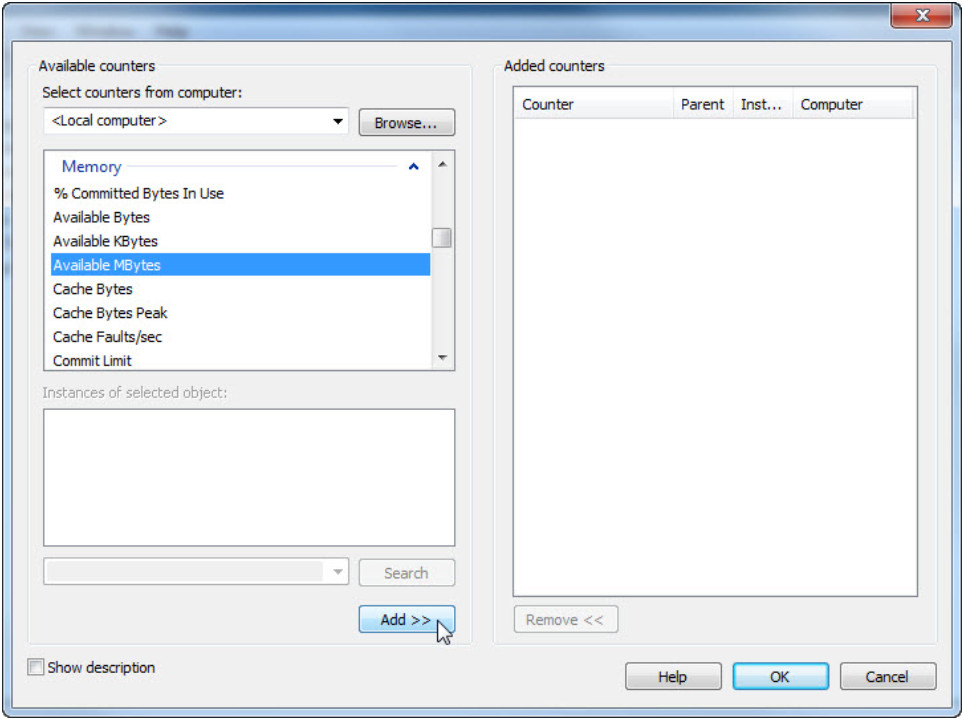
g. You should see the Available MBytes counter added in the right pane. Click OK.

h. Set the Sample interval field to 4 seconds. Click Next.

i. In the Where would you like the data to be saved? screen, click Browse.
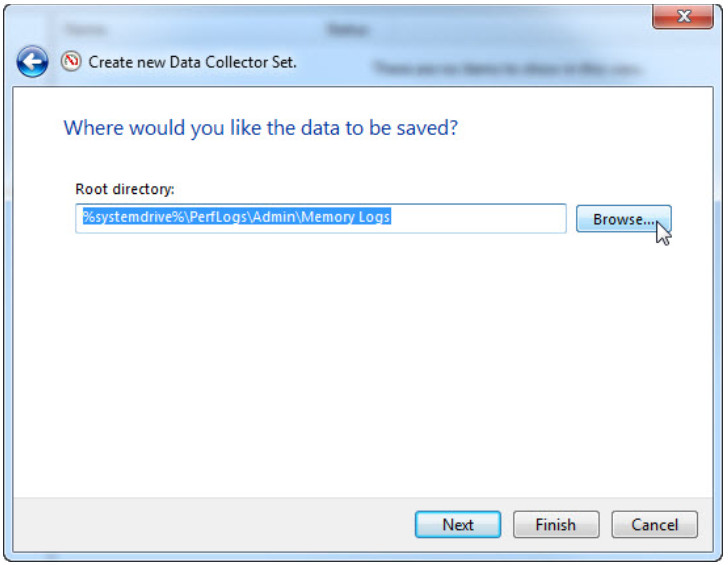
j. The Browse For Folder window opens. Select drive (C:) > PerfLogs > OK
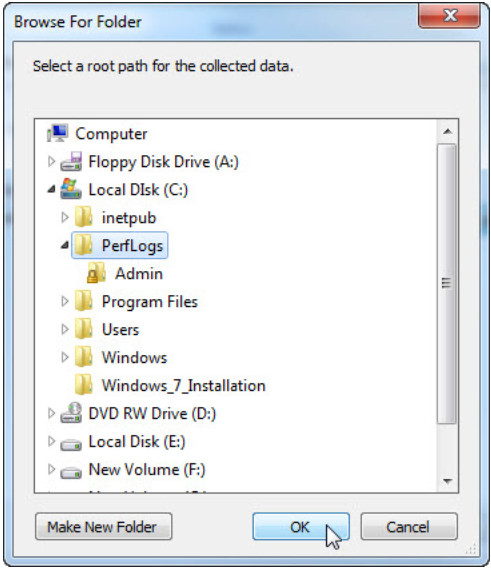
k. The Where would you like the data to be saved? window opens with the directory information that you selected in the previous step. Click Next.

l. The Create the data collector set? screen opens. Click Finish.
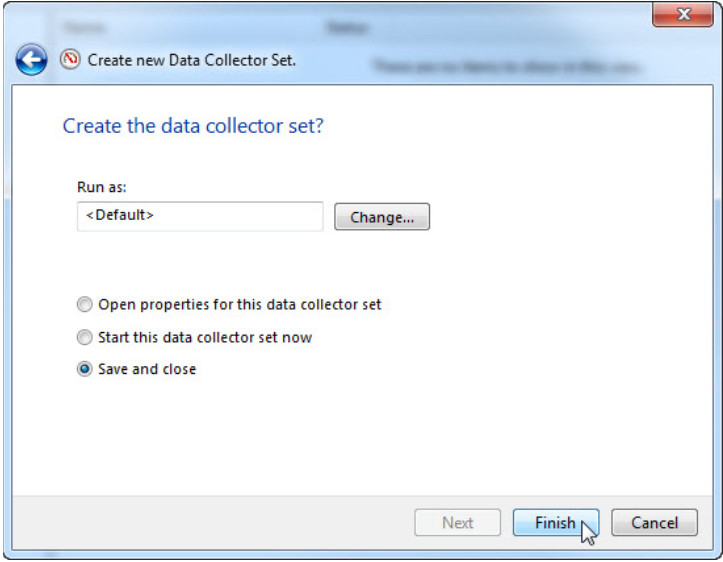
m. Expand User Defined, and select Memory Logs. Right-click Data Collector01and select Properties.
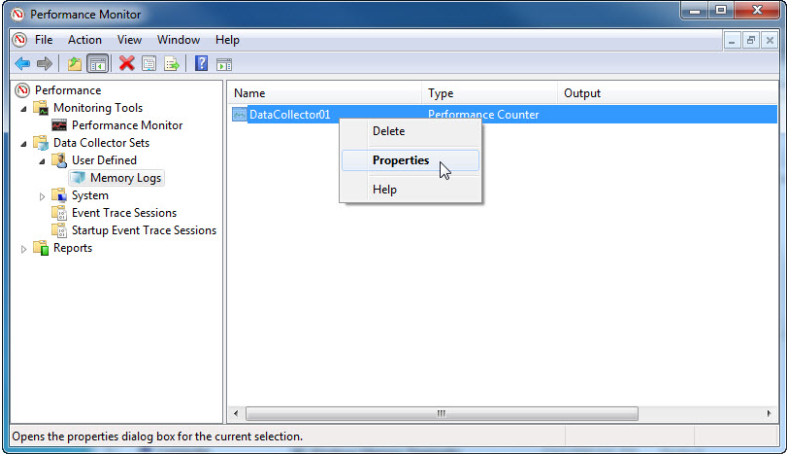
n. The DataCollector01 Properties window opens. Change the Log format: field to Comma Separated.
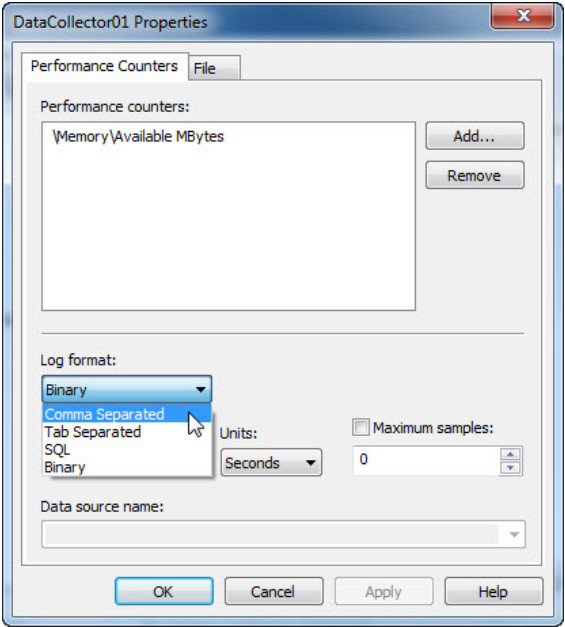
o. Click the File tab.
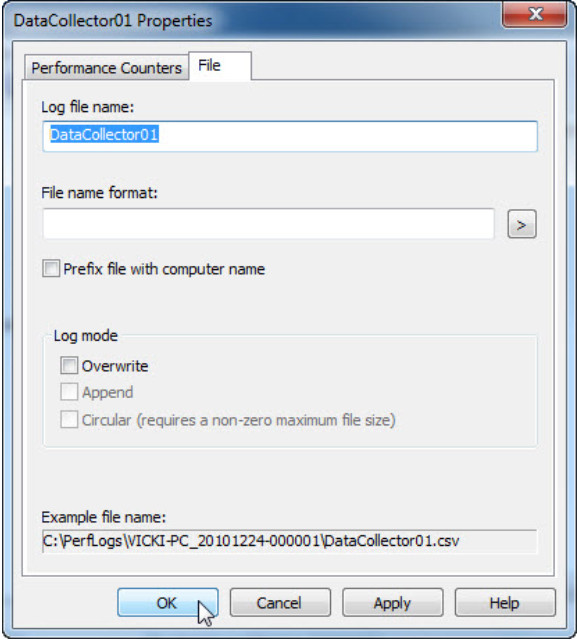
What is the full path name to the example file?
Answer may vary. For example: C:\PerfLogs\VICKI-PC_20101224_000001\DataCollector01.csv
p. Click OK.
q. Select the Memory Logs icon in the left pane of the Performance Monitor window. Click the green arrow icon to start the data collection set. Notice a green arrow is placed on top of the Memory Logs icon.
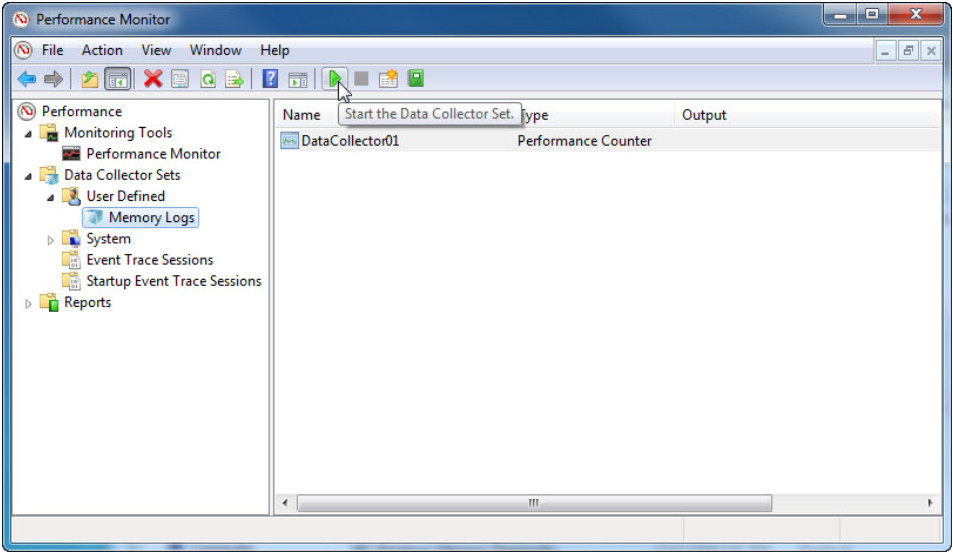
r. To force the computer to use some of the available memory, open and close a browser.
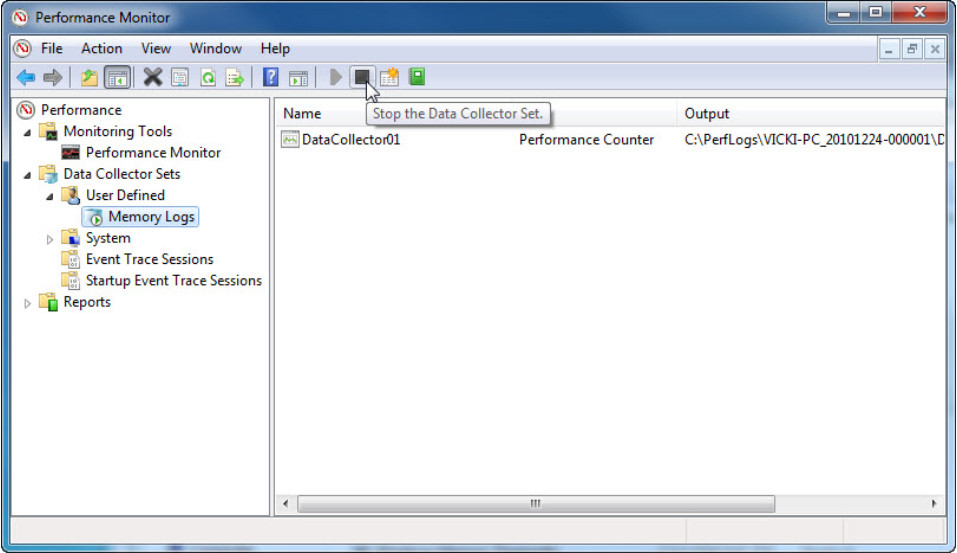
s. Click the black square icon to stop the data collection set.

What change do you notice for the Memory Logs icon?
The green arrow has been removed from the icon.
t. Click Start > Computer, and click drive C: > PerfLogs. Locate the folder that starts with your PC’s name followed by a timestamp, VICKI-PC_20101224-00001 in the example. Double-click the folder to open it, and then double-click the DataCollector01.csv file.
Note: In Vista, the folder will be named with a number, for example 000001.

Note: If the Windows cannot open the file: message is displayed, select the radio button Select a program from a list of installed programs > OK > Notepad > OK.
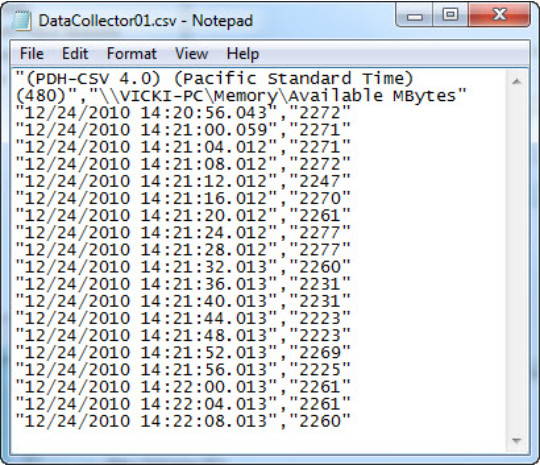
What does the column farthest to the right show?
Available memory in MBytes.
u. Close the DataCollector01.csv file and the window with the PerfLogs folder.
v. Select the Performance Monitor window. Right-click Memory Logs > Delete.
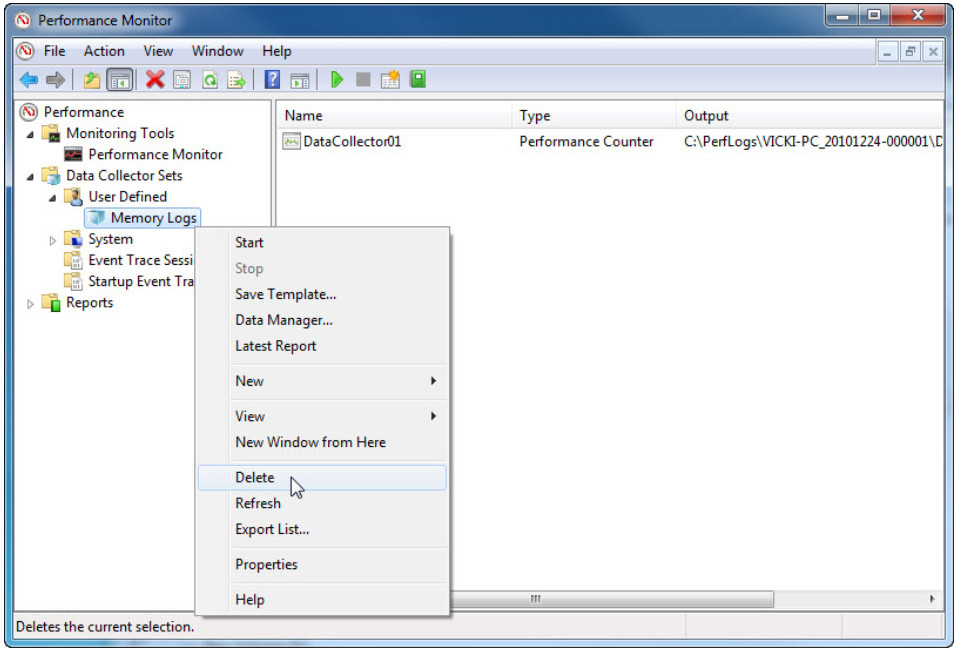
w. The Performance Monitor > Confirm Delete window opens. Click Yes.
x. Open drive C: > PerfLogs folder. Right-click on the folder that was created to hold the Memory log file, then click Delete.
y. The Delete Folder window opens. Click Yes.
z. Close all open windows.
